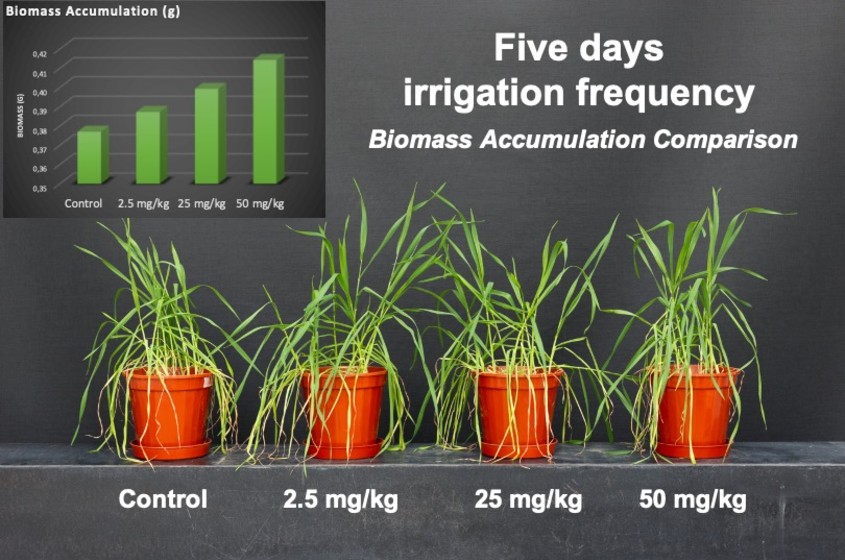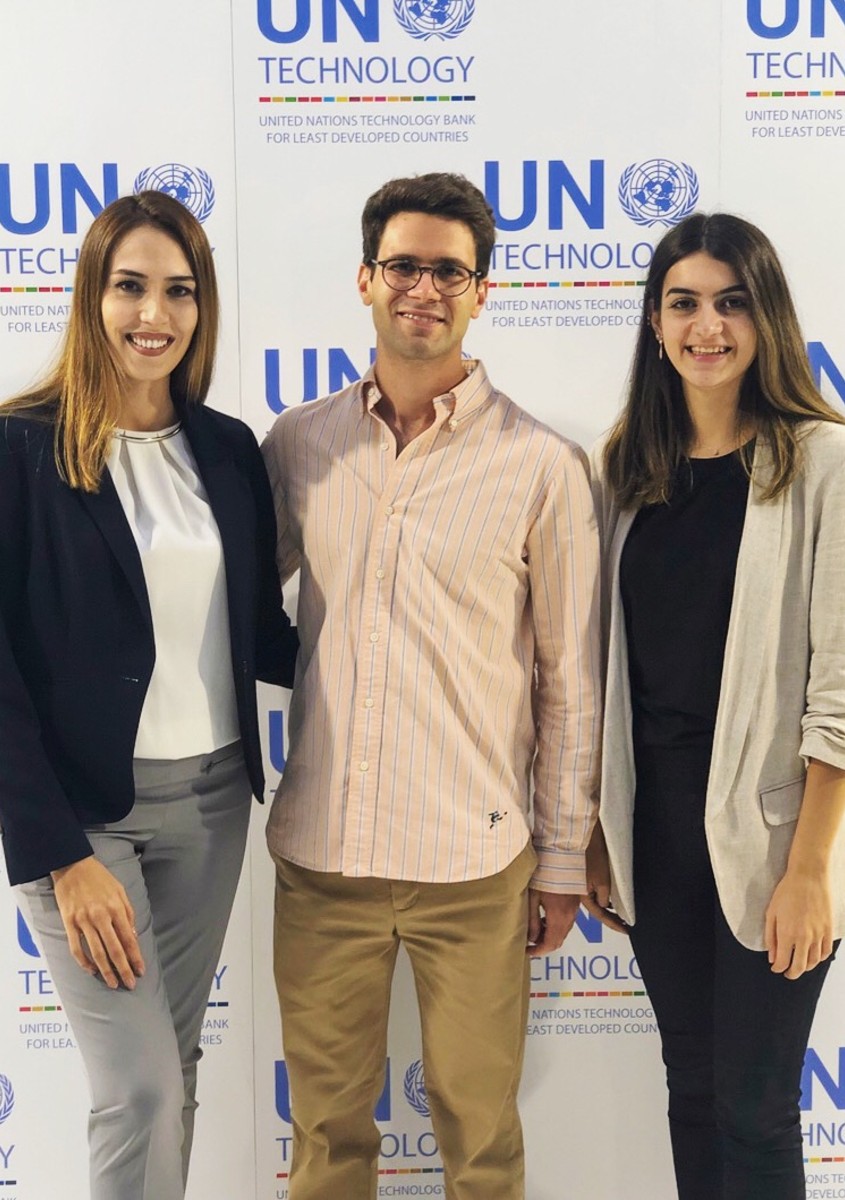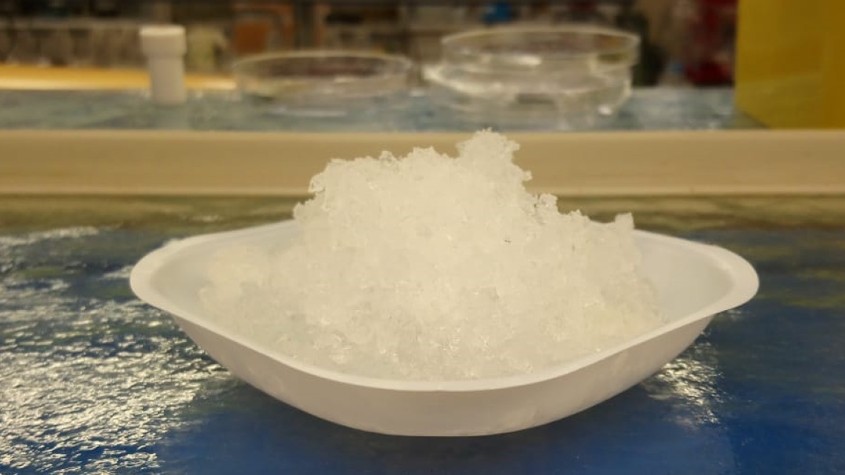

May 31, 2021
Meet Dr. Merve Senem Seven, a researcher and green entrepreneur behind SOYL-GEL – a product that retains water near the soil surface, close to the roots of the plants, and thus minimizes irrigation and allows for agriculture in arid regions.

Dr. Merve Senem Seven is the co-founder of Soy Agriculture Technologies, a green technology enterprise that produces SOYL-GEL, an advanced hydrogel ensuring water availability to plants, and SOYL-GEL+, which provides active agents, such as nutrients and plant protective materials, along with water. Since completing her doctorate degree at Sabanci University, Turkey in 2017, Dr. Seven has been working as a Postdoctoral Researcher at Sabanci University Faculty of Engineering and Natural Sciences. Throughout her studies, she has been a part of several Materials Science and Engineering research groups, which included work on agricultural nanomaterials and polymers. Dr. Seven has co-authored more than 10 peer reviewed research papers, one book chapter and two patents, and won the Hello Tomorrow Turkey challenge in 2018.

The lack of women leaders and women in decision-making positions continues to be an issue in the green technology and agricultural industry. I would suggest for green technology entrepreneurs-to-be to follow female green technology entrepreneurs on social media and understand how they got to where they are; they are a valuable source of inspiration. Furthermore, if you are interested in starting your studies in a STEM-field, ignore the gender-based stereotypes and start a career in science, it is a truly a path that can change the world.
Dr. Merve Senem Seven
Find out more about SOYL-GEL on the WIPO GREEN database, and register to contact the inventors directly.
SOYL-GEL and SOUL-GEL+ are hydrogel products applied under the soil, near plant roots, to retain and release water as well as supply essential soil nutrients and pesticides in adequate amounts. The gel is planted at the same time as the seeds, and acts as a natural subsoil reservoir: it absorbs water when it rains or the soil is irrigated, retains it until it is needed and uses osmatic pressure during dry patches to release it. This allows for the water, nutrients and potential pesticides to be given efficiently and over an elongated period of time, and bridges dry spells.
Therefore, the first function of SOYL-GEL is to address drought, specifically in the sector of agriculture, as it enables for the harvest of nutritional food in arid regions. Through providing nutrients to the plants, the gel also replenishes soil minerals and allows the land to be subsequently healthier.
In addition, SOYL-GEL increases the effectiveness of pesticides and fungicides – using the gel, farmers can apply the chemicals with greater precision and thus will need a considerably smaller amount. This is important because, currently, these chemicals used for pest control are usually applied over the plant, which leads to very poor results – less than 0.1% of them reach their target pests (Pimentel, 1995). In addition, though agro-chemicals play a central role in agriculture, they can degrade land, and minimizing their use while increasing their effectiveness is a real win-win for the plants and for the land.

During my PhD, I started working on nanomaterials and their implementation in agricultural practices, and I was fascinated by the field. It was during this time that I realized the impact of current agricultural practices on the environment and natural resources and saw the opportunity for academia to bridge this gap and come up with potential solutions. After an initial push from my thesis supervisor and with the support from my university, my co-founders and I were able to develop SOYL-GEL, which grew from a lab-based project to a product used in real-life settings.
My role actually has two components – the researcher and the tech entrepreneur, both of which come with their set of opportunities and challenges. As a researcher, I feel like the work I do is perceived as more reliable, perhaps because it is backed by an academic institution. However, and this has been felt by my co-founders as well, transforming out technology into a business can be challenging as it is not our initial area of expertise.
Regarding my role as a female entrepreneur, it was challenging at times as the agricultural sector is quite conservative, and the overall tech sector is highly male-dominated. It often made it difficult to convince sector leaders, who were mostly men, to adopt the technology and change their practices. There was also the perception that I had a male supervisor, especially when the discussion turned towards the finances, who would be the one taking the decisions. The lack of women leaders and women in decision-making positions continues to be an issue in the green technology and agricultural industry.
With an ever-increasing need for food production due to a growing population on the one hand and the continuous loss of agricultural land due to a heightened urbanization rate on the other, increasing the efficiency of agriculture is essential. A green technology revolution is crucial to bring about the development of solutions that increase agricultural efficiency while keeping fertile land healthy. Furthermore, integrating different technologies such as Internet of Things, Machine Learning and Artificial Intelligence can truly allow the green technology industry to get to the next level and build the green future the planet needs. However, the first step towards a greener agricultural sector would be to make relevant green technologies more accessible and to communicate their importance to all actors in the field.
There is a clear positive shift happening in the technology space, and the awareness of the advantages that equal opportunities for all genders bring is spreading. I would suggest for green technology entrepreneurs-to-be to follow female green technology entrepreneurs on social media and understand how they got to where they are; they are a valuable source of inspiration. Furthermore, if you are interested in starting your studies in a STEM-field, ignore the gender-based stereotypes and start a career in science, it is a truly a path that can change the world.
WIPO GREEN is a global marketplace for sustainable technology, supporting global efforts to address climate change. Through its online database and regional activities, WIPO GREEN connects green tech seekers and providers in order to catalyze green innovation and accelerate green tech transfer and diffusion. Subcribe to the monthly WIPO GREEN newsletter.